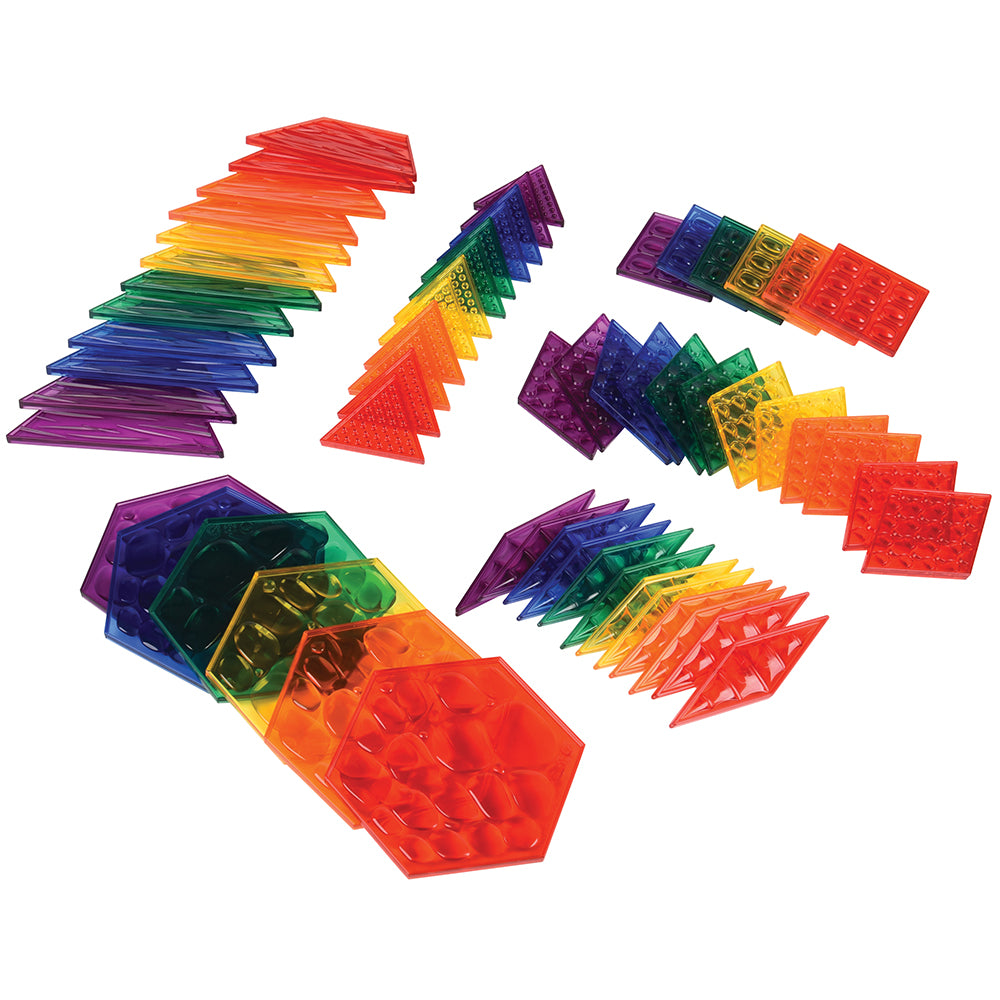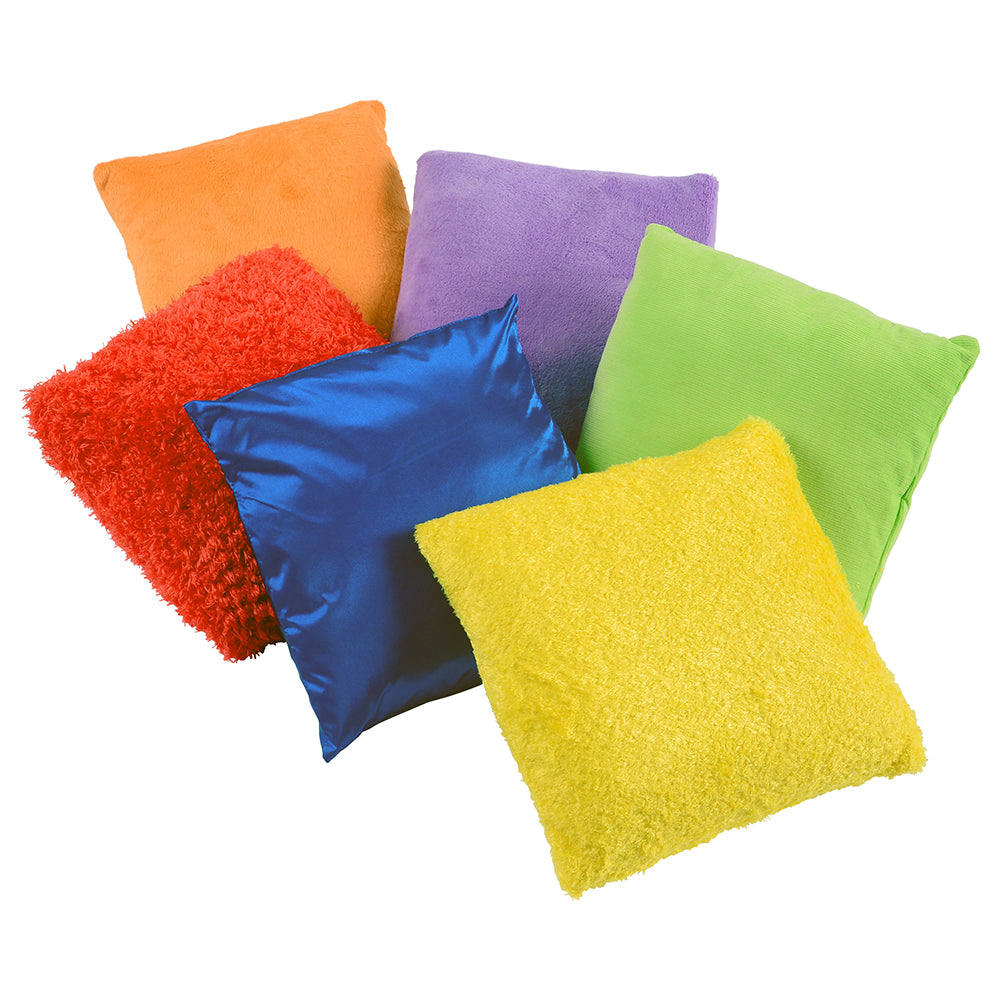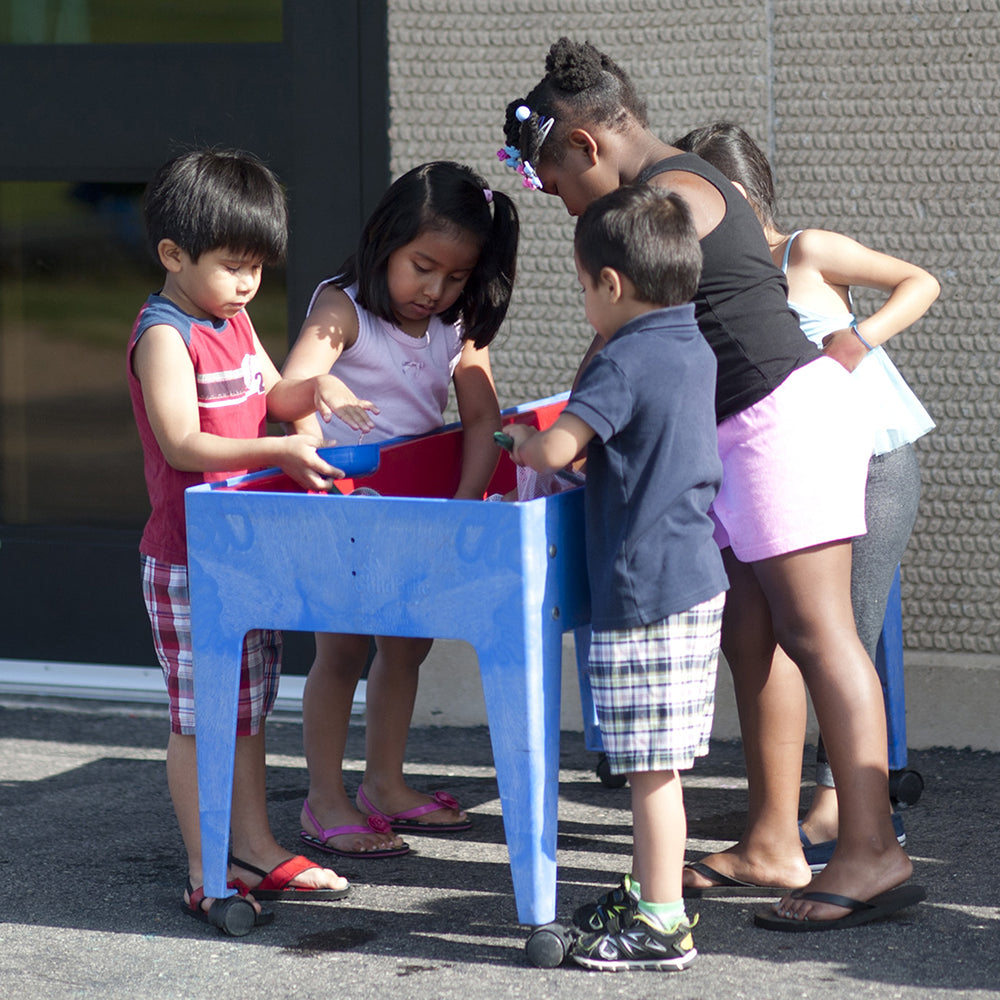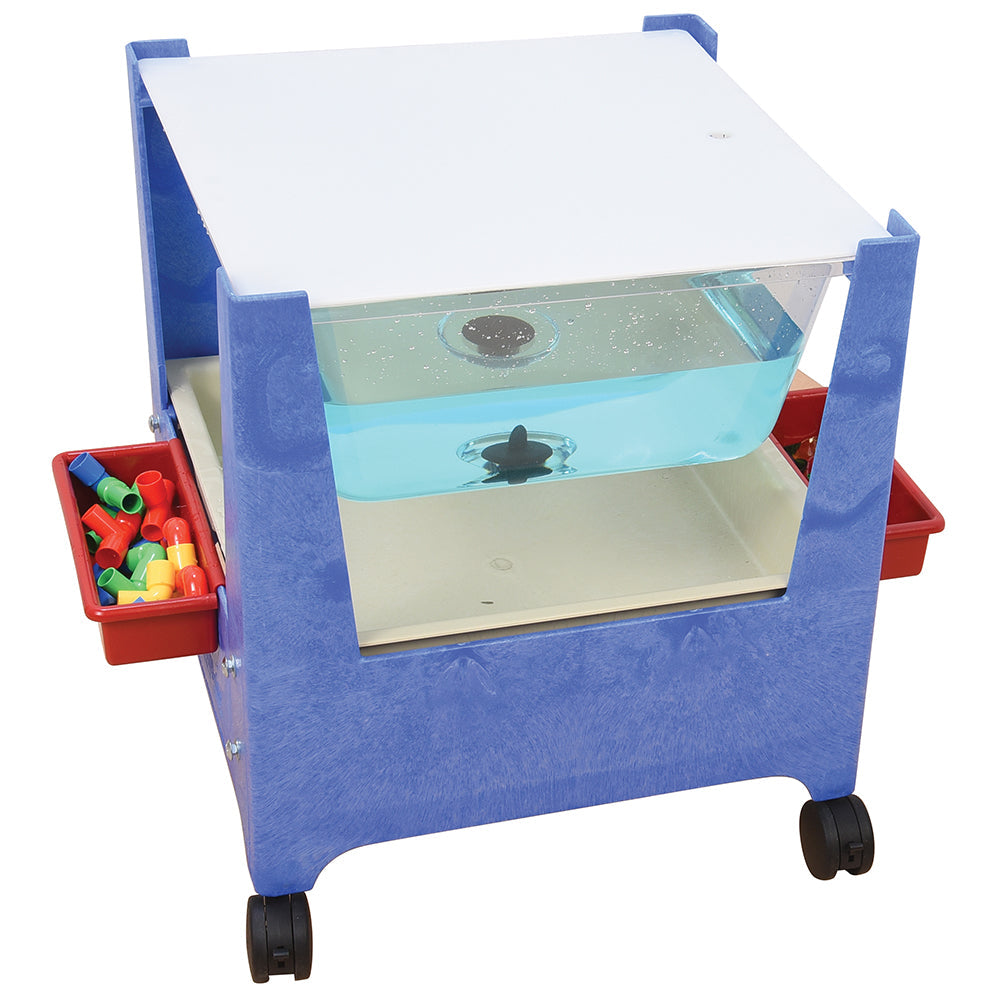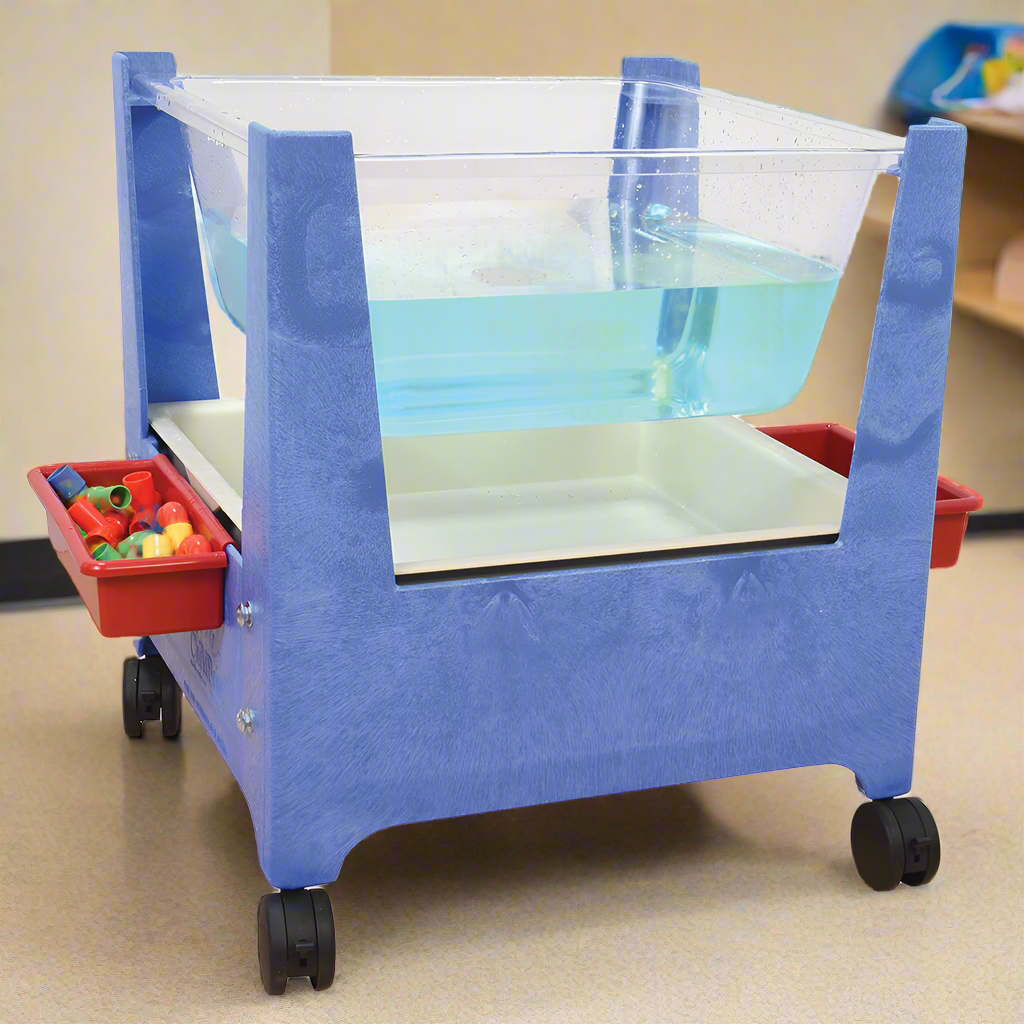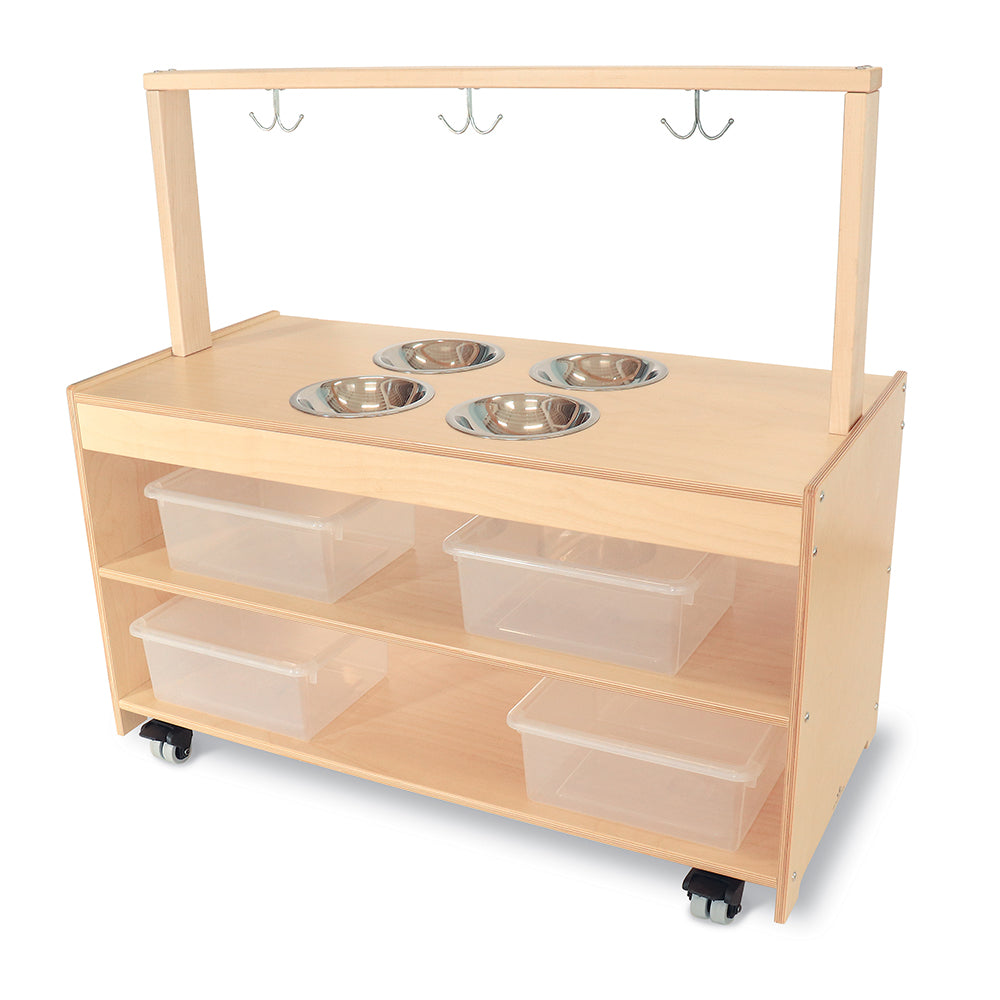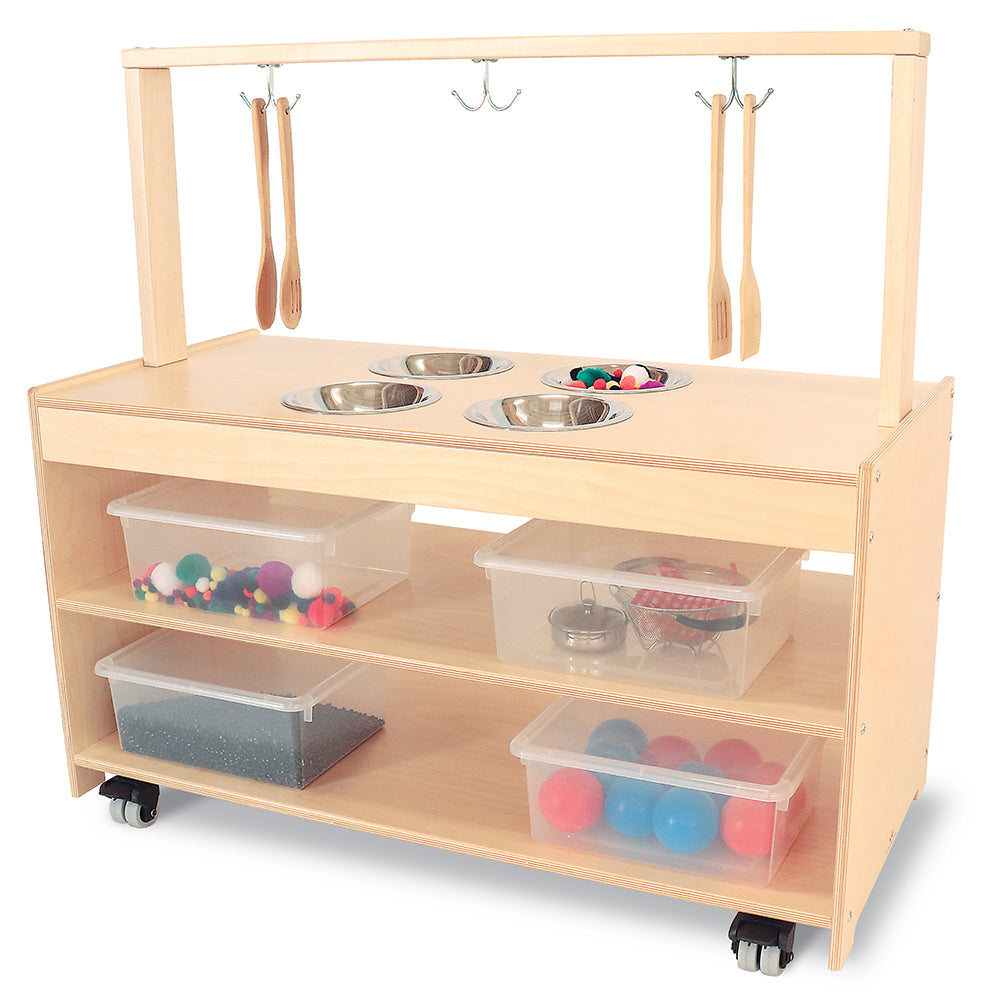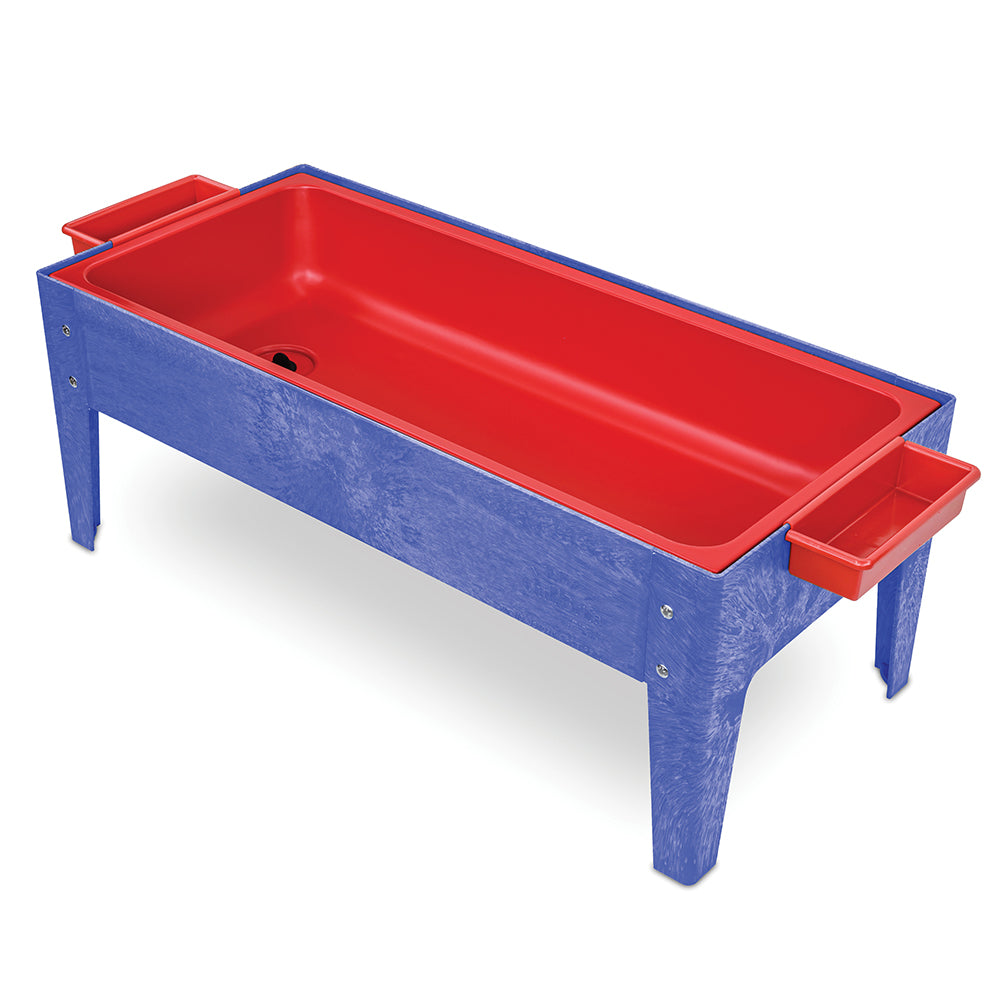How To Choose A Sensory Table

Sensory and water tables are more than just fun and engaging additions to early childhood classrooms – they're powerful tools for fostering a love of learning across all subjects! These versatile tables can be integrated into science lessons, math activities, art projects, and even dramatic play, making them a worthwhile investment that will enrich your curriculum.
With so many options available, how do you choose the perfect table for your unique classroom needs? We're here to help! In this guide, we'll walk you through all the important considerations – from age group to size and features – to ensure you find the ideal water or sensory table for your classroom or even your entire early learning center.
Built to Last: Investing in Quality Sensory Tables
Choosing high-quality products for your early childhood classroom is essential for ensuring durability, safety, and educational effectiveness.
At Constructive Playthings, we meticulously select and create products based on our deep understanding of early childhood education. With over 70 years of experience, we know that investing in high-quality products means investing in the long-term success of your educational space.
- Heavy-Duty Materials: Look for tables constructed from high-quality materials like hardwood, commercial-grade plastic, or high-density polyethylene. These sturdy materials can handle bumps, drops, and busy classroom environments, unlike flimsier options that may crack or break easily.
- Secure Assembly: A well-designed assembly process ensures the table is strong and stable, preventing wobbles or tipping during play. Look for tables with clear instructions and high-quality fasteners.
- Leakproof Construction: Especially for water play, a leakproof design is essential. Look for tables with a watertight enclosure or a separate drainage system to prevent spills and warping.
- Easy Cleaning: Sensory and water tables require regular cleaning. Look for tables with smooth, non-porous surfaces that can be easily sanitized with disinfectant wipes or soap and water. A transparent table design can also aid in quick cleaning by allowing you to see any debris inside.
Finding the Perfect Fit: Considering Your Classroom Space for Sensory Tables
Choosing the right sensory/water table for your classroom isn't just about features – it's also about finding the perfect fit for your space. Here are some key considerations to ensure your table complements your classroom environment:
- Available Space: Measure your available space and consider how many children will be using the table at once. A compact table might be ideal for smaller classrooms or focused activities, while a larger table can accommodate more students and encourage collaborative play.
- Indoor or Outdoor Fun: Do you plan to use the table indoors, outdoors, or both? Some tables are specifically designed for outdoor use with weather-resistant materials, while others are better suited for indoor settings. Consider choosing a versatile table with a lid or cover if you want to use it in both environments.
- Designated Area or Mobile Magic? Think about how you'll incorporate the table into your classroom layout. If you have a dedicated space for sensory play, a stationary table might be perfect. However, mobile tables with casters offer more flexibility for reconfiguring your classroom or moving the table for easy cleaning.
- Growing Room: While you might have a specific student population in mind now, think about future use. A larger table can accommodate a growing class size or allow for more elaborate sensory experiences.
- Proximity to Water Source: If you plan on using water extensively, consider the table's location in relation to a sink or drain. A table with a built-in drainage system can also be helpful for easy cleanup, especially after messy water play.
- Storage Solutions: Sensory/water tables often require storage for accessories or materials. Look for tables with built-in shelves or compartments, or consider purchasing separate storage solutions to keep your classroom organized.

Classroom Layout
Consider your classroom layout to determine the amount of available space, as well as potential locations that won't obstruct traffic flow or impede other activities.
Sensory Learning
Mobility and Versatility for a Dynamic Sensory Experience
- Mobile Maneuvers: If mobility is important for your classroom, consider tables mounted on casters. These casters should be heavy-duty and lockable to ensure stability when the table is in use and during movement.
- Adaptable Accessories: Consider tables with interchangeable accessories or add-on features. This allows you to customize the table's functionality to suit different activities. For example, some tables may offer attachable ramps, lids that convert to building surfaces, or even interchangeable water play attachments. This allows you to transform your table based on your lesson plans or student interests – the possibilities are endless!
- Compartments/Dividers: Tables with multiple compartments or removable dividers allow you to separate water from other materials (sand, beans, etc.) for different sensory experiences. You can also use dividers to create mini ecosystems with water on one side and land on the other, encouraging imaginative play.
- Flat Surface Conversion: Some sensory tables have a removable tub or cover that allows the table to be used as a flat surface for other activities like drawing, playing with blocks, or puzzles. This maximizes the table's usefulness beyond just water play.
- Lids or Covers: When not in use outdoors, a secure lid or cover will protect the table surface from dirt, debris, and unexpected weather elements. This will keep your table clean and ready for the next indoor or outdoor adventure.

Mobile
Many of our sensory tables are on heavy-duty lockable casters to ensure effortless movement around the classroom or to different outdoor play areas while maintaining safety during use.
Safety First: Essential Considerations for Sensory and Water Table Play
Safety in the classroom is always the top priority. Ensuring the well-being of students and the longevity of the equipment are key factors in creating a reliable and secure learning environment.
- Prevent Slips and Falls: Water play areas are inherently prone to spills and splashes. Consider using non-slip mats around your sensory/water table to create a safer play environment. These mats help absorb moisture and provide a secure footing for children, minimizing the risk of slips and falls during water play or messy activities.
- Drainage and Drying: Ensure proper drainage after water play to prevent mold or mildew growth. Look for tables with built-in drains or removable water reservoirs that allow for easy cleaning and drying. If the table will be stored wet, choose a well-ventilated area to prevent moisture build-up.
- Age-Appropriate Height: Select a table with a height that is appropriate for the age group using it. Children should be able to comfortably reach and play with the materials in the table without excessive reaching or climbing.
- Sturdy Construction: Look for a sensory table with sturdy construction, featuring durable materials and a wide base to reduce the risk of wobbling or tipping.
- Smooth, Non-Porous Surfaces: These promote easy cleaning and sanitization, crucial for maintaining hygiene in inclusive classrooms.
- Supervision: Remember, no safety feature can replace adult supervision. Always maintain a watchful eye over children while they play at the sensory table.
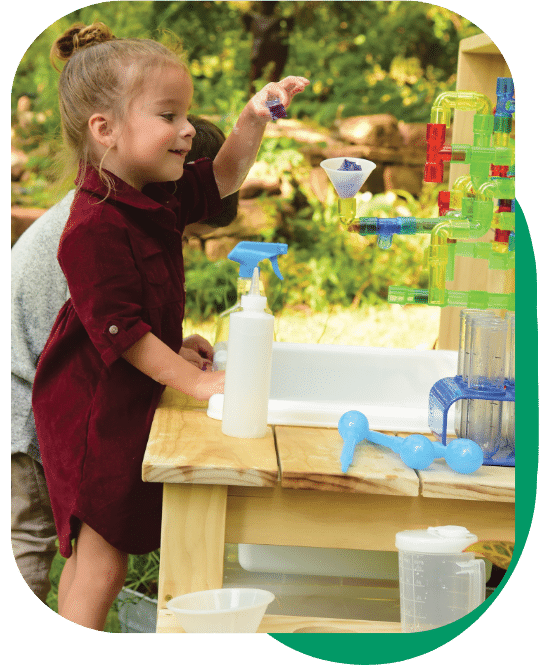
Height
Select a table with a height that is appropriate for the age group using it. Children should be able to comfortably reach and play with the materials in the table without excessive reaching or climbing.
Sensory and Water Tables for Inclusive Learning
Sensory learning should be accessible to all students. Accessible features empower students to be more independent in their learning experiences.
- Multiple Access Points: Utilize tables with removable trays, lids, or compartments. This design feature empowers children of all abilities to easily access and manipulate materials independently, fostering a sense of self-reliance and promoting inclusive play for a diverse range of learning styles and needs.
- Adjustable Heights: Stands that adjust or tables offered in different heights allow children of varying abilities to comfortably access the play surface.
- Enhancing Tactile Learning: For children with visual impairments, touch becomes a primary way to learn about the world. Sensory and water tables provide a tactile learning experience, allowing children to understand concepts like volume, weight, and cause-and-effect through manipulation of materials.
- Diverse Needs: Provide a range of textures and materials within the table for children with varying tactile sensitivities. Sensory tables offer a safe and controlled space to explore textures, temperatures, and sounds through sand, water, and other materials. Choosing tables with clear bins allows children to see the materials they're manipulating, reducing potential anxieties for those who may be overwhelmed by new materials.

Tactile Accessibility
Provide a range of textures and materials within the table for children with varying tactile sensitivities. Sensory tables offer a safe and controlled space to explore textures, temperatures, and sounds through sand, water, and other materials.










